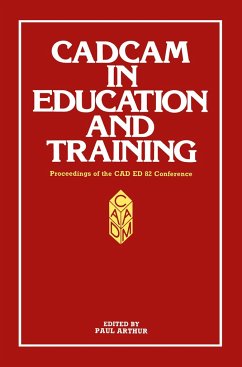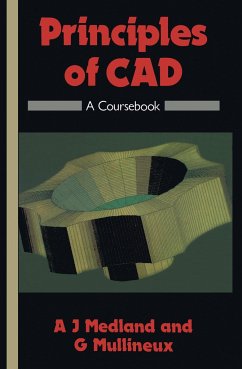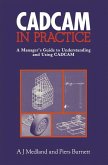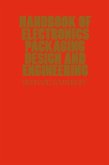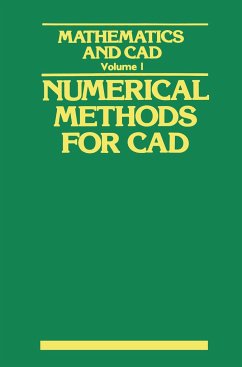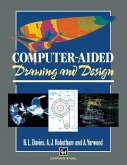1.- 1. Welcoming address.- 2. Integration and implementation of computer-aided engineering (CAE) ¿ the strategy for innovative product design in the 1980s.- 3. Getting the CADCAM tool working.- 4. Encouraging new technology links between industrial and teaching institutions: Aston Science Park.- 2: Ergonomics.- 5. Education for human-centred systems.- 6. CAD and the human operator.- 3: Training ¿ general.- 7. The training needs of CADCAM.- 8. New directions in training.- 9. Skills and knowledge requirements for CADCAM.- 10. The teaching of CAD ¿ a review of the proceedings of a conference held at Newcastle upon Tyne Polytechnic, April 1982.- 11. The integration of a commercial CAD package in the teaching of CAE on an undergraduate course.- 4: Training ¿ curriculum and training equipment.- 12. The development of micro-based procedure for the teaching of three-dimensional geometric design.- 13. A comprehensive approach for CAD ED curriculum elaboration.- 14. New technology-based training and its role in CADCAM.- 15. A review of computer graphics equipment for engineering applications.- 16. Educational software for CAD teaching.- 17. Implementing graphics in design, process and manufacturing industries.- 18. PELICAM: An interactive educational software for training students to the finite element method.- 19. Computer-aided design for design and craft students.- 5: Training ¿ the introduction of CADCAM into particular disciplines.- 20. Training requirements for architects: a view from an experienced user.- 21. Education and training in computer-aided building design.- 22. Introducing CAD into the design office.- 23. Training and learning during the introduction of an interactive computer-aided building design system into government design offices.- 24. Implications of CADCAM for training in the engineering industry.- 25. A practical approach to the training of engineers.- 26. Educating engineering designers: the introduction of desktop computers and software to the design environment.- 27. Computer-aided design for chemical engineers.- 28. A practical approach to training in the use of an integrated plant modelling system.- 29. Computer-aided design and development planning.- 30. A case history of introducing CAD into a large aerospace company.- 6: Training course experience.- 31. Teaching CAD for electronics at the Norwegian Institute of Technology ¿ present status and future trends.- 32. Post-professional education in computers in architecture at the University of Sydney.- 33. CAD in the Cambridge Engineering Tripos 1977¿82.- 34. CAD in structural engineering at UMIST.- 35. CAD ¿ the first year.- 36. Six years of teaching computer-aided design at the University of Stellenbosch.- 37. CADCAM education at Cranfield Institute of Technology.- 38. Teaching computer graphics to mechanical engineers in Britain and the United States.- 39. The teaching of CAE in a polytechnic engineering department ¿ Huddersfield experience.- 40. Teaching CAD and CAM.- 41. A practical approach to CADCAM training.- 42. Promoting industrial awareness of CADCAM.- 7: International experience.- 43. International implementation of a CAAD project in schools of architecture.- 44. A cost-effective two-way computer-aided tertiary education network for industrially developing countries.- 45. Education and training for CAD ¿ a comparative study of requirements for developing and developed nations.- 46. Chairman¿s concluding remarks.
Hinweis: Dieser Artikel kann nur an eine deutsche Lieferadresse ausgeliefert werden.
Hinweis: Dieser Artikel kann nur an eine deutsche Lieferadresse ausgeliefert werden.
